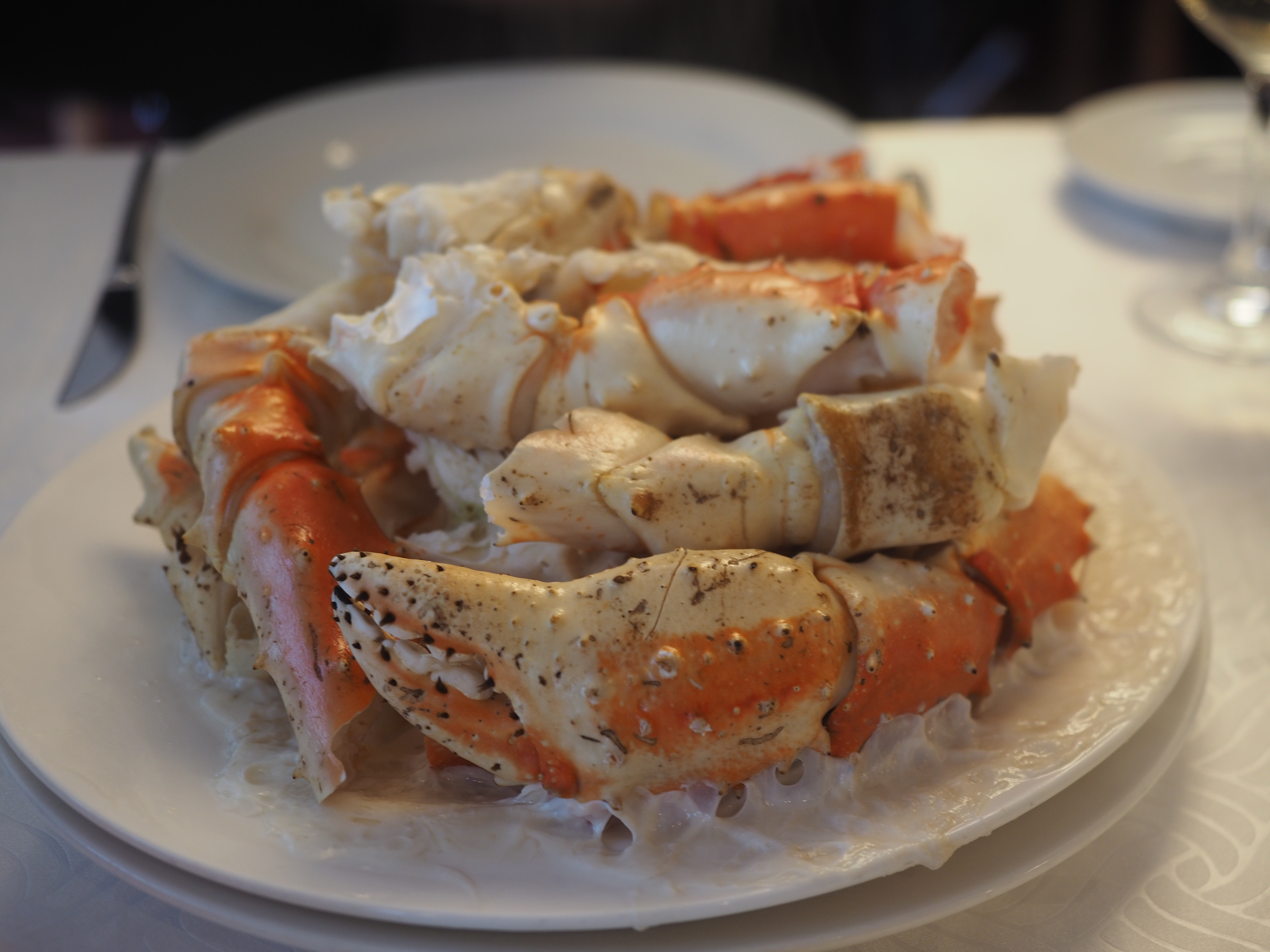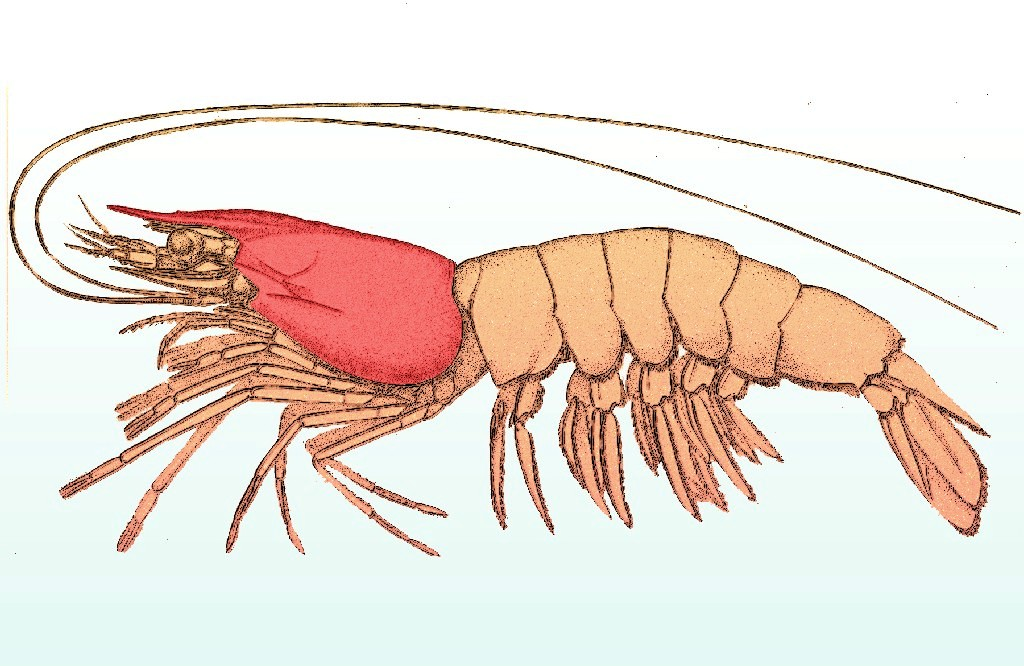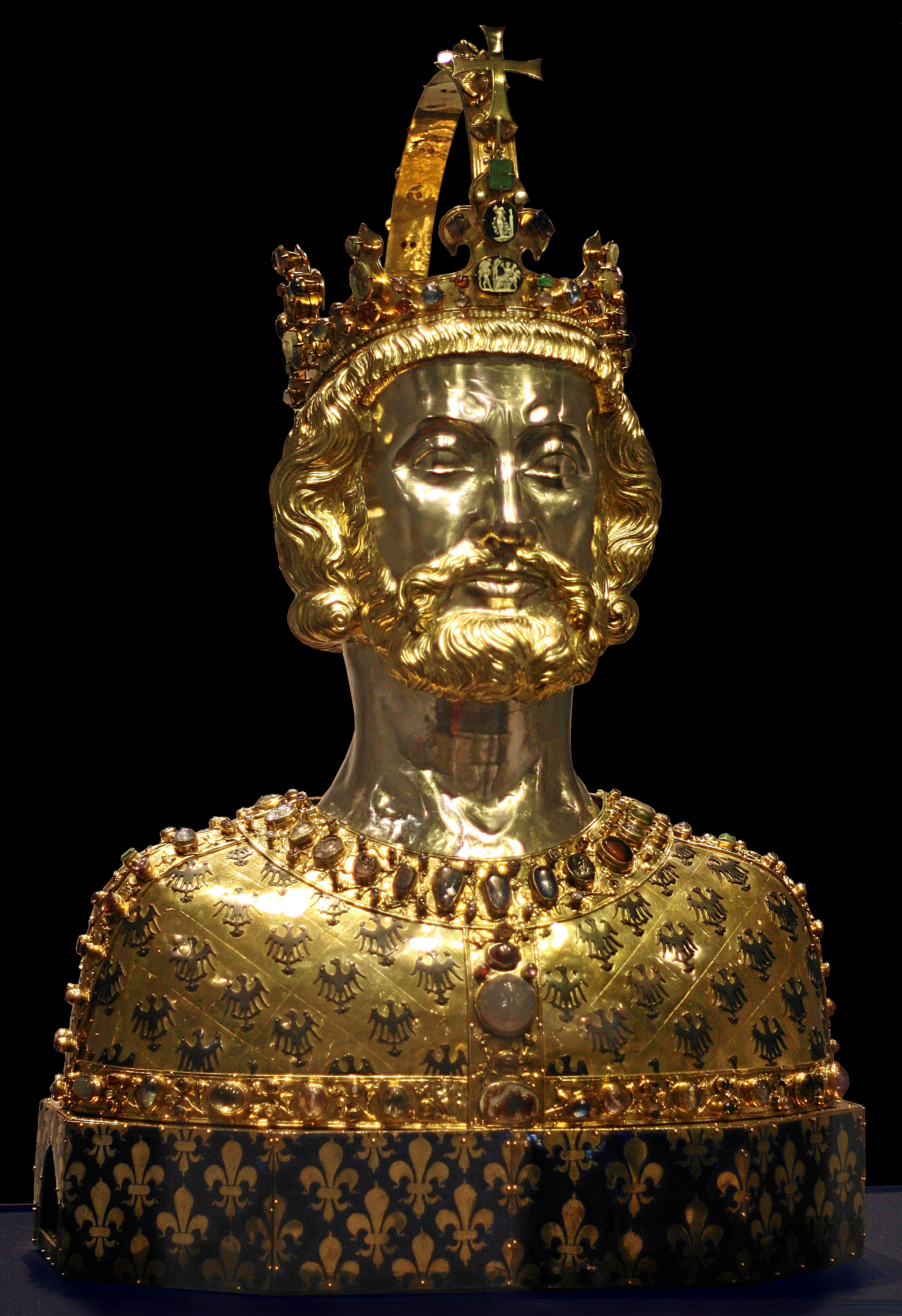|
Puget Sound King Crab
The Puget Sound king crab (''Lopholithodes mandtii''), is a species of king crab which inhabits the oceans of the Pacific coast of North America from Alaska to central California. Adults are orange, red and purple in color, while juveniles are either mostly orange or have small blotches of red and purple. They can be recognized by their blunt bumps on their carapace. Puget Sound king crabs are larger than the similar brown box crab, with an average size of 6–10 inches. Description The Puget Sound king crab, which has the scientific name ''Lopholithodes mandtii'', is an uncommon species of crab with distinct features that can be found on the West Coast of the United States; from Alaska to Central California. Juvenile Puget Sound king crabs are primarily orange with some patches of red and purple. As they grow into adulthood, the ''L. mandtii'' form a more mixed shell color of red, orange, and purple. They can also grow to be an average size of 6–10 inches, with a carapace, or ... [...More Info...] [...Related Items...] OR: [Wikipedia] [Google] [Baidu] |
Johann Friedrich Von Brandt
Johann Friedrich von Brandt (25 May 1802 – 15 July 1879) was a German-Russian naturalist, who worked mostly in Russia. Brandt was born in Jüterbog and educated at a gymnasium in Wittenberg and the University of Berlin. In 1831 he emigrated to Russia, and soon was appointed director of the Zoological Museum of the St Petersburg Academy of Sciences. Brandt encouraged the collection of native animals, many of which were not represented in the museum. Many specimens began to arrive from the expeditions of Severtzov, Przhevalsky, Middendorff, Schrenck and Gustav Radde. He described several birds collected by Russian explorers off the Pacific Coast of North America, including Brandt's cormorant, red-legged kittiwake and spectacled eider. As a paleontologist, Brandt ranks among the best. He was also an entomologist, specialising in Coleoptera (beetles) and Diplopoda (millipedes). He died in Merreküll, Governorate of Estonia. He is also commemorated in Brandt's bat, Brandt's ... [...More Info...] [...Related Items...] OR: [Wikipedia] [Google] [Baidu] |
Species
In biology, a species is the basic unit of Taxonomy (biology), classification and a taxonomic rank of an organism, as well as a unit of biodiversity. A species is often defined as the largest group of organisms in which any two individuals of the appropriate sexes or mating types can reproduction, produce Fertility, fertile offspring, typically by sexual reproduction. Other ways of defining species include their karyotype, DNA sequence, morphology (biology), morphology, behaviour or ecological niche. In addition, paleontologists use the concept of the chronospecies since fossil reproduction cannot be examined. The most recent rigorous estimate for the total number of species of eukaryotes is between 8 and 8.7 million. However, only about 14% of these had been described by 2011. All species (except viruses) are given a binomial nomenclature, two-part name, a "binomial". The first part of a binomial is the genus to which the species belongs. The second part is called the specifi ... [...More Info...] [...Related Items...] OR: [Wikipedia] [Google] [Baidu] |
King Crab
King crabs are a taxon of decapod crustaceans chiefly found in cold seas. Because of their large size and the taste of their meat, many species are widely caught and sold as food, the most common being the red king crab (''Paralithodes camtschaticus''). King crabs are generally thought to be derived from hermit crab-like ancestors within the Paguridae, which may explain the asymmetry still found in the adult forms. This ancestry is supported by several anatomical peculiarities which are present only in king crabs and hermit crabs. Although some doubt still exists about this hypothesis, king crabs are the most widely quoted example of carcinisation among the Decapoda. The evidence for this explanation comes from the asymmetry of the king crab's abdomen, which is thought to reflect the asymmetry of hermit crabs, which must fit into a spiral shell. Controversial taxon Although formerly classified among the hermit crabs in the superfamily Paguroidea, king crabs are now place ... [...More Info...] [...Related Items...] OR: [Wikipedia] [Google] [Baidu] |
Carapace
A carapace is a dorsal (upper) section of the exoskeleton or shell in a number of animal groups, including arthropods, such as crustaceans and arachnids, as well as vertebrates, such as turtles and tortoises. In turtles and tortoises, the underside is called the plastron. Crustaceans In crustaceans, the carapace functions as a protective cover over the cephalothorax (i.e., the fused head and thorax, as distinct from the abdomen behind). Where it projects forward beyond the eyes, this projection is called a rostrum. The carapace is calcified to varying degrees in different crustaceans. Zooplankton within the phylum Crustacea also have a carapace. These include Cladocera, ostracods, and isopods, but isopods only have a developed "cephalic shield" carapace covering the head. Arachnids In arachnids, the carapace is formed by the fusion of prosomal tergites into a single plate which carries the eyes, ocularium, ozopores (a pair of openings of the scent gland of Opilione ... [...More Info...] [...Related Items...] OR: [Wikipedia] [Google] [Baidu] |
Brown Box Crab
The brown box crab (''Lopholithodes foraminatus'') is a king crab that lives from Prince William Sound, Alaska to San Diego, California, at depths of . It reaches a carapace length of and feeds on bivalves and detritus. The box crab gets its name from a pair of round tunnel-like openings that form between the claws and adjacent legs when the animal folds its limbs up against its body. Both claws, and their adjacent legs, have matching half-circle notches in them that line up to create a circle-shaped opening when the limbs are tightly pulled against one another. This tubular round opening is called a foramen. The crab often lies buried in the sediment, and the two foramens in the chelipeds allow water into the gill chamber for respiration. The gill chamber is also sometimes used by the commensal fish ''Careproctus ''Careproctus'' is a genus of snailfishes found in benthic and benthopelagic habitats in the Atlantic, Pacific, Arctic and Southern Oceans. Whether they truly ... [...More Info...] [...Related Items...] OR: [Wikipedia] [Google] [Baidu] |
Walla Walla University
Walla Walla University is a private Adventist university in College Place, Washington. The university has five campuses throughout the Pacific Northwest. It was founded in 1892 and is affiliated with the Seventh-day Adventist Church. The university has an annual enrollment of around 1,700 students. It is accredited by the Northwest Commission on Colleges and Universities and is also denominationally accredited. Walla Walla University offers more than 100 areas of study including preprofessional degrees and four graduate programs. History In 1887, W.W. Prescott became the first education secretary of the General Conference of Seventh-day Adventists. He noticed that Seventh-day Adventist schools were opening all over the place without a plan for long-term success, and decided to encourage these new Adventist schools to consolidate into larger, regional institutions that would stand a better chance of survival. In 1890, Prescott visited the Pacific Northwest and asked ... [...More Info...] [...Related Items...] OR: [Wikipedia] [Google] [Baidu] |
Alaskan King Crab
The red king crab (''Paralithodes camtschaticus''), also called Kamchatka crab or Alaskan king crab, is a species of king crab native to the Bering Sea and Gulf of Alaska. It was introduced to the Barents Sea. It grows to a leg span of , and is heavily targeted by fisheries. Description The red king crab is the largest species of king crab. Red king crabs can reach a carapace width up to , a leg span of , and a weight of . Males grow larger than females. Today, red king crabs infrequently surpass in carapace width and the average male landed in the Bering Sea weighs . It was named after the color it turns when it is cooked rather than the color of a living animal, which tends to be more burgundy. Distribution The red king crab is native to the Bering Sea, North Pacific Ocean, around the Kamchatka Peninsula and neighboring Alaskan waters. It was introduced artificially by the Soviet Union into the Murmansk Fjord, Barents Sea, during the 1960s to provide a new, and valuable ... [...More Info...] [...Related Items...] OR: [Wikipedia] [Google] [Baidu] |
Puget Sound
Puget Sound ( ) is a sound of the Pacific Northwest, an inlet of the Pacific Ocean, and part of the Salish Sea. It is located along the northwestern coast of the U.S. state of Washington. It is a complex estuarine system of interconnected marine waterways and basins, with one major and two minor connections to the open Pacific Ocean via the Strait of Juan de Fuca— Admiralty Inlet being the major connection and Deception Pass and Swinomish Channel being the minor. Water flow through Deception Pass is approximately equal to 2% of the total tidal exchange between Puget Sound and the Strait of Juan de Fuca. Puget Sound extends approximately from Deception Pass in the north to Olympia in the south. Its average depth is and its maximum depth, off Jefferson Point between Indianola and Kingston, is . The depth of the main basin, between the southern tip of Whidbey Island and Tacoma, is approximately . In 2009, the term Salish Sea was established by the United States Boa ... [...More Info...] [...Related Items...] OR: [Wikipedia] [Google] [Baidu] |
King Crabs
King is the title given to a male monarch in a variety of contexts. The female equivalent is queen, which title is also given to the consort of a king. *In the context of prehistory, antiquity and contemporary indigenous peoples, the title may refer to tribal kingship. Germanic kingship is cognate with Indo-European traditions of tribal rulership (c.f. Indic '' rājan'', Gothic '' reiks'', and Old Irish '' rí'', etc.). *In the context of classical antiquity, king may translate in Latin as '' rex'' and in Greek as ''archon'' or '' basileus''. *In classical European feudalism, the title of ''king'' as the ruler of a ''kingdom'' is understood to be the highest rank in the feudal order, potentially subject, at least nominally, only to an emperor (harking back to the client kings of the Roman Republic and Roman Empire). *In a modern context, the title may refer to the ruler of one of a number of modern monarchies (either absolute or constitutional). The title of ''king'' i ... [...More Info...] [...Related Items...] OR: [Wikipedia] [Google] [Baidu] |
Crustaceans Of The Eastern Pacific Ocean
Crustaceans (Crustacea, ) form a large, diverse arthropod taxon which includes such animals as decapods, seed shrimp, branchiopods, fish lice, krill, remipedes, isopods, barnacles, copepods, amphipods and mantis shrimp. The crustacean group can be treated as a subphylum under the clade Mandibulata. It is now well accepted that the hexapods emerged deep in the Crustacean group, with the completed group referred to as Pancrustacea. Some crustaceans ( Remipedia, Cephalocarida, Branchiopoda) are more closely related to insects and the other hexapods than they are to certain other crustaceans. The 67,000 described species range in size from '' Stygotantulus stocki'' at , to the Japanese spider crab with a leg span of up to and a mass of . Like other arthropods, crustaceans have an exoskeleton, which they moult to grow. They are distinguished from other groups of arthropods, such as insects, myriapods and chelicerates, by the possession of biramous (two-parted) limbs, and b ... [...More Info...] [...Related Items...] OR: [Wikipedia] [Google] [Baidu] |







